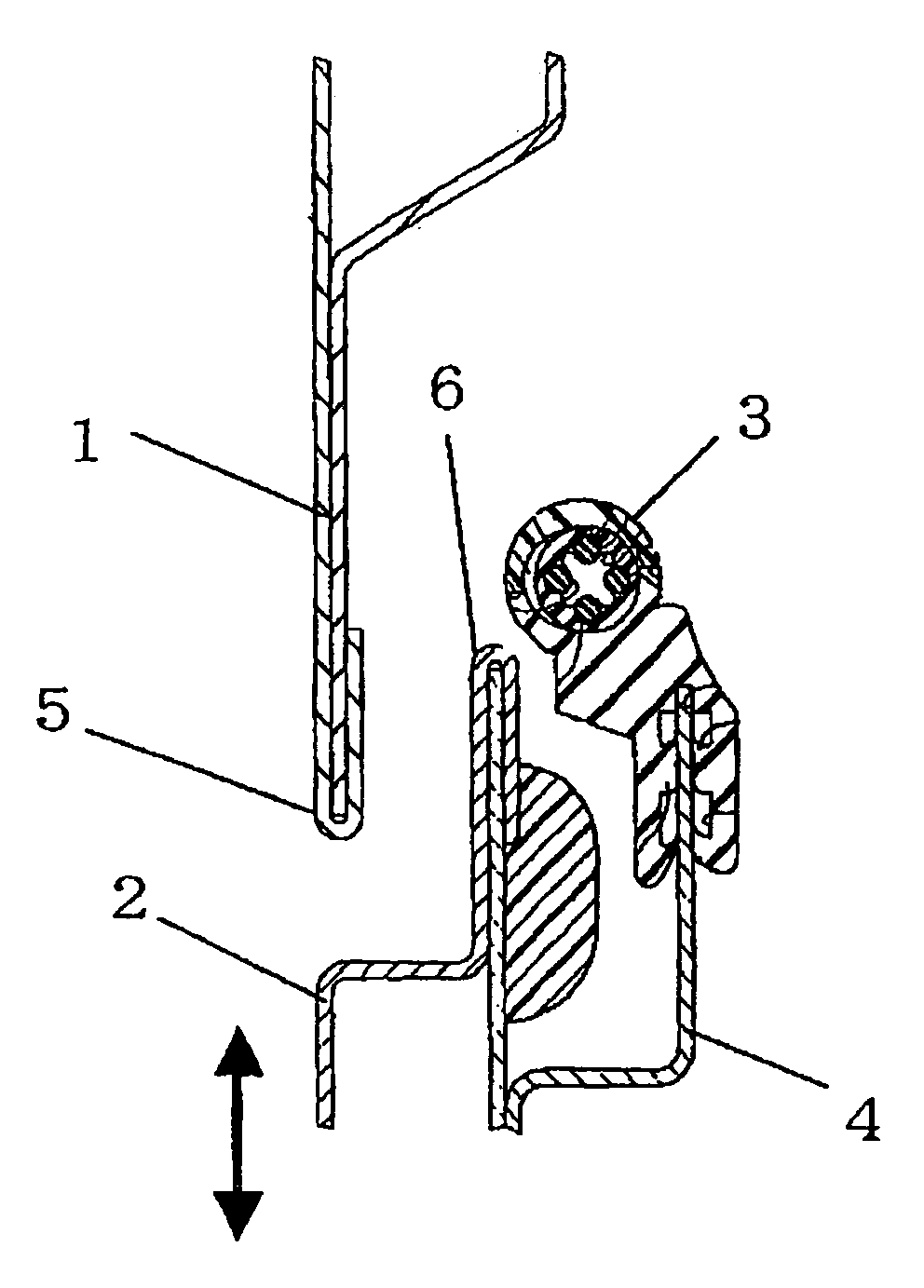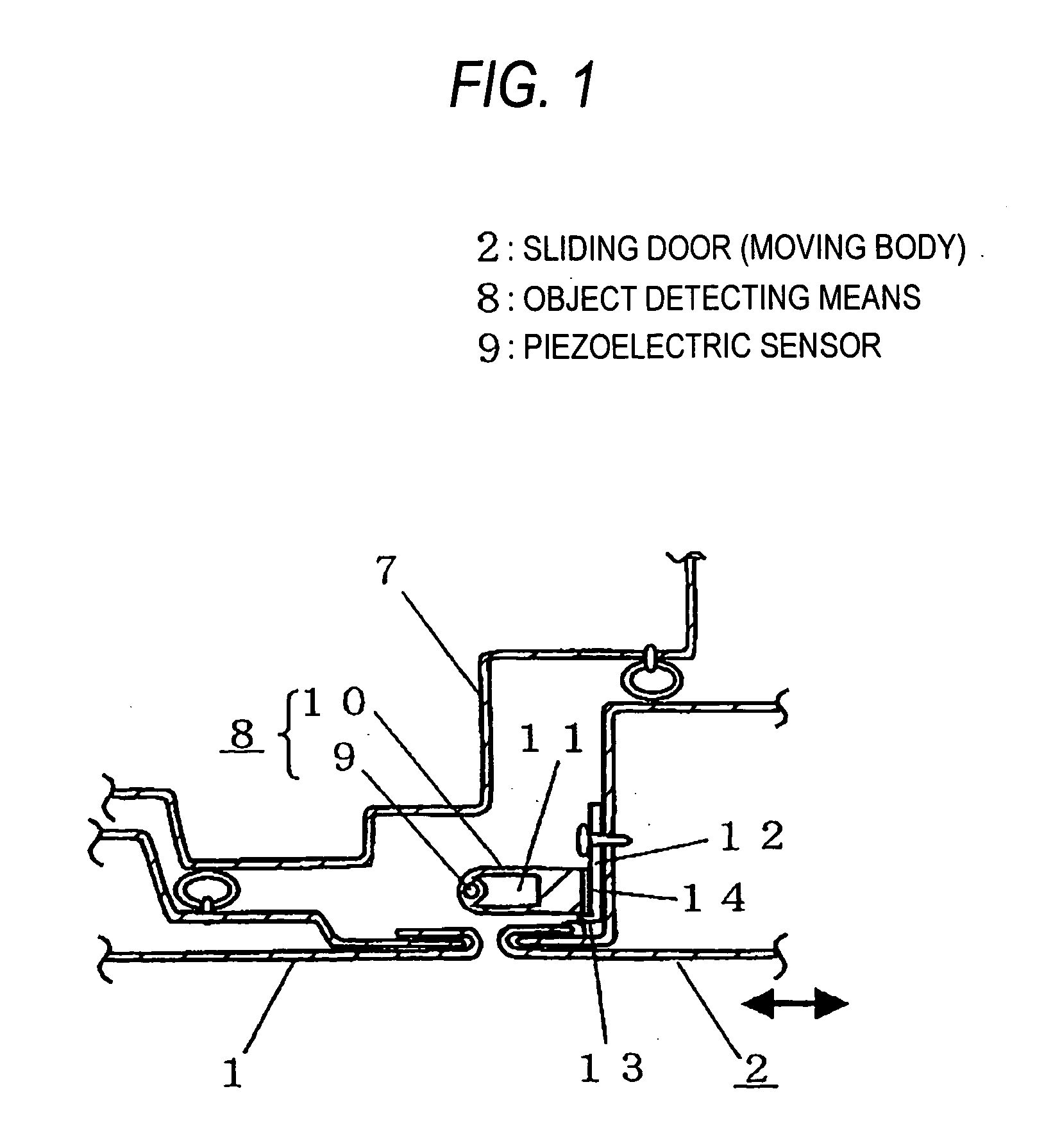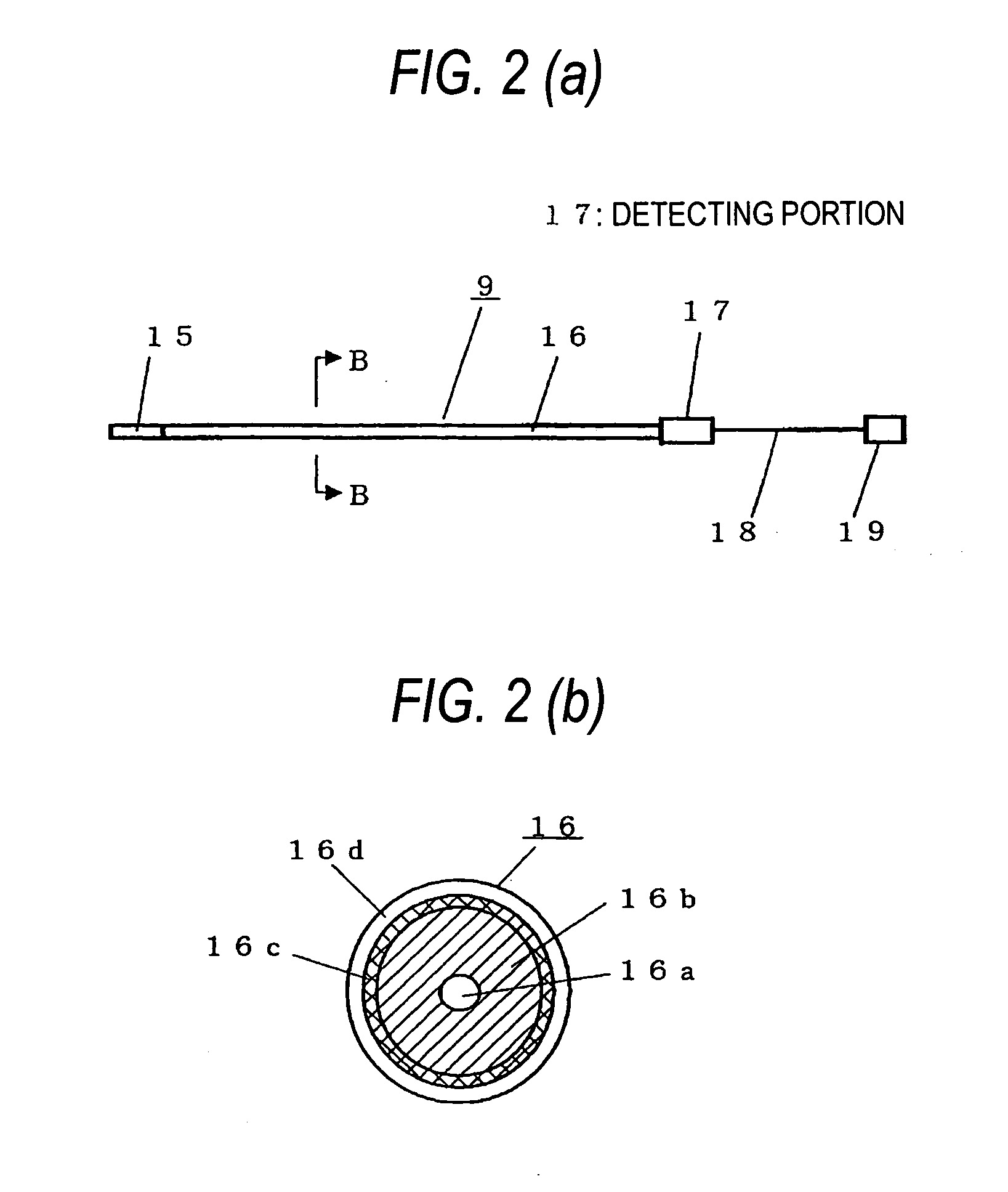Moving device and open/close control device for moving body
a technology of moving body and control device, which is applied in the direction of instruments, wing accessories, fluid pressure measurement, etc., can solve the problems of door closing operation continuing without detection, another part of the human body making unnecessary contact with the sliding door or being caught, and achieving the effect of increasing safety
- Summary
- Abstract
- Description
- Claims
- Application Information
AI Technical Summary
Benefits of technology
Problems solved by technology
Method used
Image
Examples
embodiment 1
[0058] An invention according to Embodiment 1 will be described by reference to FIGS. 1 to 5 and 7. In Embodiment 1, a moving device of the invention will be described as being applied to a sliding door of an automobile.
[0059]FIG. 1 is a sectional view of a moving device of Embodiment 1 at a position corresponding to the line A-A in FIG. 7. FIG. 1 shows a state in which a sliding door is closed completely, and an upper side of the drawing denotes an inside of a vehicle, whereas a lower side thereof denotes an outside thereof.
[0060] Firstly, the configuration of the moving device of Embodiment 1 will be as follows. In FIG. 1, reference numeral 1 denotes a body portion of a vehicle body (an end portion of a door at a side of a front passenger seat in FIG. 7), and 2 denotes a sliding door as a moving body. Reference numeral 7 denotes a main structure of the vehicle body and 8 denotes a contact detecting means, which has a piezoelectric sensor 9 which is flexible and which takes the f...
embodiment 2
[0090] An invention according to Embodiment 2 will be described by reference to FIG. 6. FIG. 6 is an external view showing a moving device of Embodiment 2. Points in which Embodiment 2 differs from Embodiment 1 are that a moving body is a running vehicle 24 having bumpers 23 and that the object detecting means 8 is provided in the bumpers 23.
[0091] In this configuration, when the object detecting means 8 detects a contact of an object or a removal of the object that has been in contact, the running of the running vehicle 24 is stopped or the running direction of the running vehicle 24 is reversed for a predetermined period of time. In addition, when a contact of an object is detected before the running vehicle 24 starts to run, a configuration may be adopted in which the running of the running vehicle 24 continues to be stopped until a removal of the object is detected. According to the configurations, the running of the running vehicle 24 can be controlled safely by detecting the ...
embodiment 3
[0093] An invention according to Embodiment 3 will be described below. A point in which this embodiment differs from Embodiments 1, 2 resides in that the detecting portion 17 determines that either a contact or a removal of an object has occurred when the amplitude of an output signal from the piezoelectric sensor 9 exceeds a set range which is set in advance. To be specific, in the characteristic chart of V in FIG. 5, determining that either a contact or a removal of an object has occurred when an absolute value |V−V0| of the amplitude of V from V0, a signal of Hi is outputted from the object detecting means 8 as a determination output. As an actual circuit, a window comparator may be used to perform the aforesaid process.
[0094] With a contact or removal, the polarity of V relative to V0 may vary depending on conditions on a bent state and polarized direction of the piezoelectric sensor, electrode allocation (which to be made a reference potential) and piezoelectric sensor support...
PUM
| Property | Measurement | Unit |
|---|---|---|
| degree of freedom | aaaaa | aaaaa |
| diameter | aaaaa | aaaaa |
| flexible | aaaaa | aaaaa |
Abstract
Description
Claims
Application Information
 Login to View More
Login to View More - R&D
- Intellectual Property
- Life Sciences
- Materials
- Tech Scout
- Unparalleled Data Quality
- Higher Quality Content
- 60% Fewer Hallucinations
Browse by: Latest US Patents, China's latest patents, Technical Efficacy Thesaurus, Application Domain, Technology Topic, Popular Technical Reports.
© 2025 PatSnap. All rights reserved.Legal|Privacy policy|Modern Slavery Act Transparency Statement|Sitemap|About US| Contact US: help@patsnap.com



